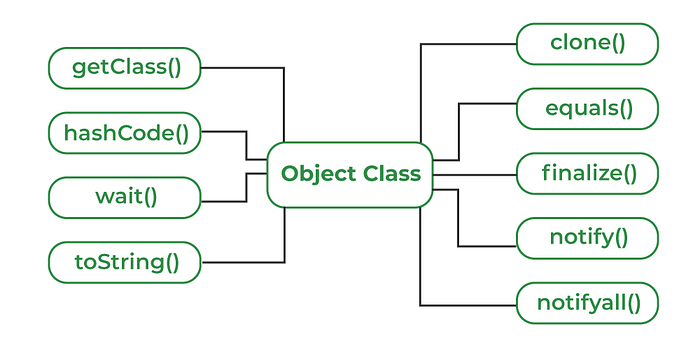
In the world of Java programming, every class, no matter how complex or simple, shares a common ancestry — the Object class. In the Java programming language, Object serves as the base class for all other classes, forming the foundation upon which the entire Java ecosystem is built. It provides essential methods like equals(), hashCode(), and toString(), making it an indispensable component of Java's object-oriented paradigm.
Understanding the Object Class
The Object class is a part of the java.lang package, which is automatically imported into every Java program. As a result, you don't need to explicitly import this class to use its features; it's available by default.
The equals() Method
One of the most frequently used methods provided by the Object class is equals(). This method is essential for comparing the content of two objects for equality. By default, equals() compares object references, but it's often overridden in subclasses to provide a more meaningful comparison based on the object's attributes.
Here’s a basic example:
class Student {
private String name;
private int age;
// Constructors, getters, setters, and other methods
@Override
public boolean equals(Object obj) {
if (this == obj) return true;
if (obj == null || getClass() != obj.getClass()) return false;
Student student = (Student) obj;
return age == student.age && Objects.equals(name, student.name);
}
}
In this example, we override the equals() method to compare Student objects based on their name and age attributes.
The hashCode() Method
The hashCode() the method is used to return a hash code value for an object. Hash codes are crucial for data structures like hash tables and hash sets, as they determine the object's location within these data structures. A well-implemented hashCode() method ensures efficient storage and retrieval of objects in such collections.
@Override
public int hashCode() {
return Objects.hash(name, age);
}Here, we use the Objects.hash() method to generate a hash code based on the name and age fields.
The toString() Method
The toString() method is another valuable method provided by the Object class. It returns a string representation of an object, which is often used for debugging and logging purposes. By default, toString() returns a string that includes the class name and a unique identifier for the object.
@Override
public String toString() {
return "Student{" +
"name='" + name + '\'' +
", age=" + age +
'}';
}In this example, we override toString() to provide a more informative string representation of a Student object.
The Role of Object Class in Inheritance
When you create a new class in Java, you implicitly inherit from the Object class. This means that all the methods defined in the Object class, including equals(), hashCode(), and toString(), are available to your class. You can choose to use these methods as-is or override them to provide custom behavior.
public class MyClass {
// Your class members and methods
}In the above code, MyClass is implicitly a subclass of, inheriting all its methods.
The Object class is the bedrock upon which Java's object-oriented programming is built. It provides crucial methods like equals(), hashCode(), and toString() that are used throughout the Java ecosystem. While these methods have default implementations, they are often overridden in user-defined classes to provide meaningful behavior specific to those classes. Understanding and using the Object class and its methods is fundamental for any Java developer, as it forms the foundation for creating robust and efficient Java programs.
